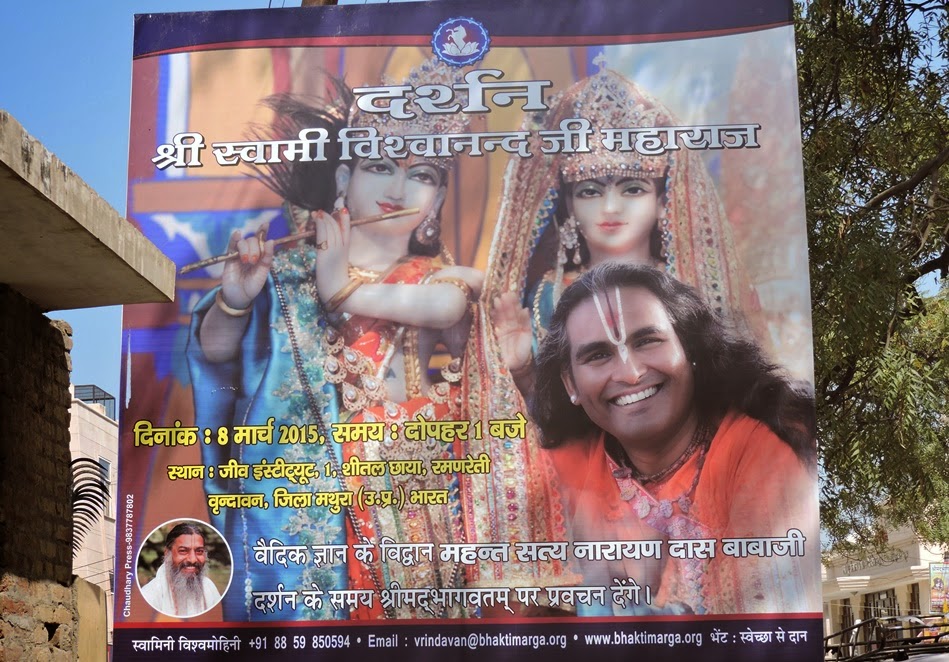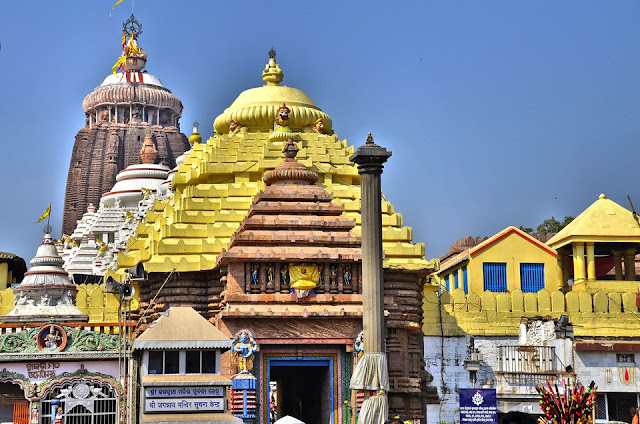Rasa-pushtim (Govinda Lilamrita)
vibhur api sukha-rūpaḥ sva-prakāśo'pi bhāvaḥ
kṣaṇam api rādhā-kṛṣṇayor yā ṛte svāḥ
pravahati rasa-puṣṭiṁ cid-vibhūtīr iveśaḥ
śrayati na padam āsāṁ kaḥ sakhīnāṁ rasajñaḥ
pravahati rasa-puṣṭiṁ cid-vibhūtīr iveśaḥ
śrayati na padam āsāṁ kaḥ sakhīnāṁ rasajñaḥ
Nandimukhi continues: “Hey Vrinde! Just as the all-pervading Supreme Lord cannot relish pleasure without his hlädiné çakti, Radha Krishna’s combined form of premānanda fails to be nourished without the sakhis’ help. How then could a rasika bhakta resist the temptation to take their shelter?”
This verse has been of interest to me for some time. It is quoted in the Ramananda-samvada as a glorification of the necessity of taking shelter of the sakhis. Generally, the GLA does not make philosophical or theological statements, as it is a lila grantha. Here, however is a statement about rasa-tattva and lila-tattva that is quite unique.
Without the sakhis, Radha and Krishna's bhava, even though it is all-pervading, full of joy and self-luminous (sat, ananda, cit), does not fulfill its potential as rasa without them. And, as an example, Krishnadas says that similarly the Supreme Lord (Narayan) does not attain rasa-puṣṭi without his cid-vibhuti, or spiritual opulences.
If we follow strictly the metaphorical structure of the verse, Radha and Krishna's bhava is being compared to God, the sakhis to His spiritual energies. What is missing in the equation is what is God developing into.
Thus:
Without the sakhis, Radha and Krishna's bhava, even though it is all-pervading, full of joy and self-luminous (sat, ananda, cit), does not fulfill its potential as rasa without them. And, as an example, Krishnadas says that similarly the Supreme Lord (Narayan) does not attain rasa-puṣṭi without his cid-vibhuti, or spiritual opulences.
If we follow strictly the metaphorical structure of the verse, Radha and Krishna's bhava is being compared to God, the sakhis to His spiritual energies. What is missing in the equation is what is God developing into.
Thus:
rādhā-kṛṣṇayor bhāvaḥ
|
īśaḥ
|
yāḥ (sakhīḥ) vinā
|
cid-vibhūtīḥ (vinā)
|
rasa-puṣṭiṁ nahi pravahati
|
?
|
The commentary puts pravahati rasa-pushtim in the corresponding spot, and indeed we really have no choice. [Even though Saraswati Thakur glosses nitya-nija-cid-aiśvaryādikam.] So Narayan does not achieve "rasa-pushti" without the development of his spiritual energies, in spite of being vibhu (all-pervading), sva-prakāśa (self-luminous) and sukha-rūpa (full of joy). This is evidently a familiar concept in our theology. It is, in fact, a distinct feature of Hindu theology in general and that of the Gaudiyas in particular. God does not exist alone, but with his energies, just like the Sun is incomprehensible, non-existent, without heat and light.
The interesting feature is the use of the rasa-śāstra term, rasa-puṣṭi. Janardan Chakravarti talks about the rasa-śāstra as being a fourth prasthāna, along with śruti, smriti and nyāya. He also talks about upamāna, or analogy, as the fourth pramāna, along with pratyaksa, anumāna and śabda. Despite the limitations of metaphor, analogical thinking certainly helps us to understand; indeed, even with their limitations, metaphor, analogy, allegory, or myth help us to understand the nature of the Divine.
Raso vai sah. The Supreme Lord is rasa, and the individual soul becomes joyful on tasting that rasa, on immersing herself in that ocean. This verse implies that in order for God Himself to realize Himself, there must be someone to appreciate Him, someone to taste the rasa. This is of course incomprehensible to those who make a great deal out of terms like ātmārāma and āptakāma. It is only comprehensible if we accept that God's energies are not separate from his very being.
However, Krishnadas here takes it further. He uses this as an example, whereas we are usually accustomed to hearing analogies made for the second half of the equation (cid-vibhūtīr iveśaḥ). But here, the sakhis are compared to the energies that are needed to complete the bhāva, to bring it to fruition (rasa-pushti). They are thus understood to be part and parcel of the bhāva, not different from it. This is interesting from several points of view.
First of all, the sthāyi-bhāva is usually considered the principal ingredient that is transformed into rasa by the addition of the other ingredients. But the implication of this verse is that there has to be someone to experience it in order for it to be turned into rasa. Indeed, the entire concept of rasa is only fully comprehensible through the idea of audience.
Krishnadas's own translation in the CC confirms this, at least in part:
Without the sakhis, this lila cannot find nourishment. The sakhis expand these pastimes and then relish them. No one but the sakhis can enter this lila. Anyone who follows them by accepting their mood will attain service to Radha and Krishna in the intimacy of the kunja, which is the ultimate goal of devotional practice. There is no other way to obtain this end result. (CC 2.8.203-205)The verse that follows in the Govinda-līlāmṛta also sheds a little light on Kaviraj Goswami's intentions:
Radha is a flowering golden creeper; Krishna is a blossoming tamal tree. To what conscious entity in this world would the beautiful union of these two not bring joy? (11.18)So whether you prefer Vrishabhanu-nandini (rādhā-snehādhikā) or Nanda-nandana (kṛṣṇa-snehādhikā), the object of love for devotees is Radha and Krishna, by which we mean their bhava, or love. And even though this love is full in the divine attributes of existence, consciousness and bliss, it needs the presence of an audience, the sakhis, participant observers--you--in order to expand.





Comments